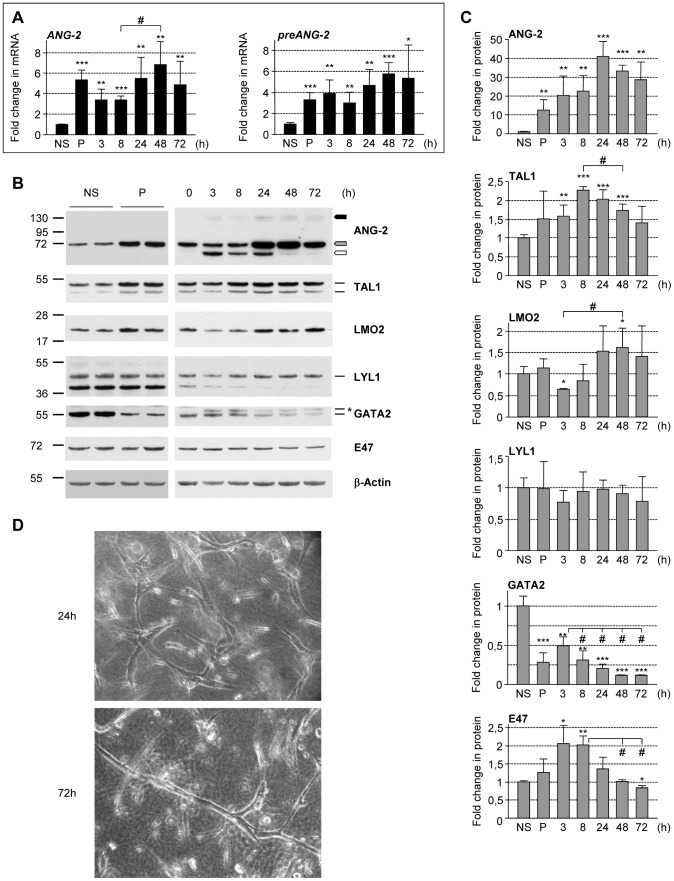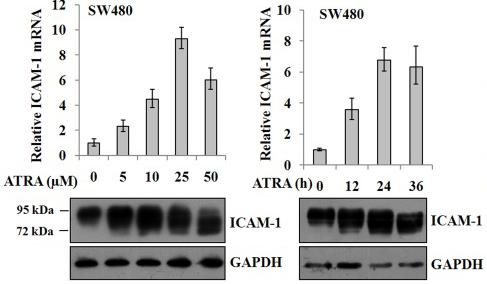Human basic Fibroblast Growth Factor Recombinant
Categories: FGF familyFGF familyRecombinant Human Cytokines$70.00 – $700.00
Description
Accession
P09038
Source
Optimized DNA sequence encoding Human basic Fibroblast Growth Factor mature chain was expressed in Escherichia Coli.
Molecular weight
Recombinant bFGF is a monomer protein consisting of 155 amino acid residue subunits, and migrates as an approximately 17 kDa protein under non-reducing and reducing conditions in SDS-PAGE.
Purity
>96%, as determined by SDS-PAGE and HPLC
Biological Activity
The ED(50) was determined by the dose-dependent stimulation of thymidine uptake by BaF3 cells expressing FGF receptors, corresponding to a specific activity of ≥2x10^7 units/mg.
Protein Sequence
MAAGSITTLP ALPEDGGSGA FPPGHFKDPK RLYCKNGGFF LRIHPDGRVD GVREKSDPHI KLQLQAEERG VVSIKGVCAN RYLAMKEDGR LLASKCVTDE CFFFERLESN NYNTYRSRKY TSWYVALKRT GQYKLGSKTG PGQKAILFLP MSAKS
Endotoxin
Endotoxin content was assayed using a LAL gel clot method. Endotoxin level was found to be less than 0.1 ng/µg(1EU/µg).
Presentation
Human Basic FGF was lyophilized from a 0.2 μm filtered solution inM NaCl,20mM PB pH7.0 .
Reconstitution
A quick spin of the vial followed by reconstitution in distilled water to a concentration not less than 0.1 mg/mL. This solution can then be diluted into other buffers.
Storage
The lyophilized protein is stable for at least years from date of receipt at -20° C. Upon reconstitution, this cytokine can be stored in working aliquots at2° -8° C for one month, or at -20° C for six months, with a carrier protein without detectable loss of activity. Avoid repeated freeze/thaw cycles.
Usage
This cytokine product is for research purposes only.It may not be used for therapeutics or diagnostic purposes.
Interactor
O35082
Interactor
O43353
Interactor
Interactor
Interactor
Q802A9
Interactor
Interactor
Biological Process
Biological Process
Molecular function
Molecular function
Molecular function
Methods
Tissue Dissociation and Culture
- Biopsy human brain tissue containing the anterior temporal lobe and the hippocampus were obtained from surgery for medically refractory epilepsy.
- All specimens were collected with written patient consent and ethical approval from the Northern X Ethics Committee (biopsy tissue) and the University of Auckland Human Participants Ethics Committee.
- Eleven biopsy specimens (mean age 45 years) were collected from the surgical theatre at the Auckland City Hospital and transported to our laboratory in Ca2+ and Mg2+ free ice-cold Hank’s balanced salt solution (HBSS).
- Tissue containing the periventricular zone and the hippocampus was dissected and dissociated prior to being digested in HBSS containing 2.5 U/mL papain and 100 U/mL DNase 1 for 20 minutes at 37°C with gentle rotation, which included a gentle trituration step at 10 minutes.
- Enzymatic digestion was halted by the addition of NPC proliferation media; DMEM:F12 containing B27 , Penicillin/Streptomycin , GlutaMAX , 40 ng/mL FGF-2 ,…
2.3. Human ESC/iPSC Differentiation
- Human iPSCs were induced to form neural rosettes by culturing EBs for 7 days in suspension culture in medium composed of 50% medium'>DMEM/F12, 50% medium'>Neurobasal medium supplemented with glutamax, 0.5x N2 supplement, 0.5x B27 supplement , 0.5 mM ascorbic acid, 0.1% albumin, 4.5 × 10−4 M MTG , and bFGF (20 ng/mL).
- On the 7th day, EBs were plated onto gelatin-coated plates in the medium described above supplemented with EGF (20 ng/mL) and allowed to differentiate for an additional 4 days.
- On day 11, the number of EBs containing ≥1 neural rosette was manually counted.
Tumor Samples and Cell Culture
-
The GB cell lines were established from fresh GBM surgical specimens collected directly from the operating theatre in PBS plus 0,6% glucose and immediately transported on ice to the cell culture room and processed and cultured as monolayer cultures as previously described
in vitro assays of self-renewal, differentiation potential andin vivo tumor formation and propagation. - In our analysis were included also other GB lines (G166 and G179 cells) and GBM neurospheres (NSGBnR1) previously described in other studies 4 cells/well density in proliferation medium and subjected to lentiviral transduction
Cell Culture
- Frozen female CD34+ CBCs were supplied by Bio-Resource Center .
- C34+ CBCs were cultured in hematopoietic culture medium [serum-free X-Vivo10 containing 50 ng/mL IL-6 , 50 ng/mL sIL-6 , 50 ng/mL SCF , ten ng/mL TPO , and 20 ng/mL Flt3/4 ligand ].
- Reprogrammed cells were cultured in feeder-less primate ES cell medium Repro FF (, .
- No. RCHEMD004), ReproFF2 (ReproCELL, cat No. RCHEMD006), mTeSR1 ( catalog number 05850) or E8 (16) supplemented with five ng/mL bFGF (total bFGF ten ng/mL) on Pronectin F-coated dishes.
- Passage of human iPSCs was previously described
Mammosphere Formation Assay
- Mammosphere formation assay was performed as described previously 3–1×104 cells per milliliter single-cell suspensions were seed into six-well non-adherent plates in serum-free DMEM/F12 supplemented with 2% B27 , 20 ng/ml EGF , 20 ng/ml bFGF , 0.4% BSA , and 5 µg/ml insulin.
- After 7 day of culture, the numbers of mammospheres were counted.
Cell Culture
- HCT116 and HT29 colon cancer cell lines were maintained in DMEM/F12 supplemented with 10% FBS, 200 U/ml penicillin, 200 µg/ml streptomycin.
- Tumorsphere media (also called as serum free medium, SFM) was composed of DMEM/F12 media supplemented with 1×B27 , EGF (20 ng/ml), bFGF (10 ng/ml), routine insulin (5 µg/ml), 200 U/ml penicillin, and 200 µg/ml streptomycin.
- For 3D suspension culture, HCT116 and HT29 cells grown in two dimensional monolayer were digested with trypsin, resuspended, and then seeded at a density of 2×106 cells in SFM in 100 mm ultra-low attachment dishes (Corning) at 37°C in a humidified 5% CO2 ?
- 95% air atmosphere.
Generation of iPSC
- Epidermal keratinocytes were used for iPSC generation, except for patients SP05 and SP09, for whom dermal fibroblasts were used.
- Keratinocytes were cultured in serum-free low calcium medium and reprogrammed using a 1:1:1 mix of retroviruses encoding FLAG-tagged OCT4, and essentially as previously described (et al, 2, with media changes every other day.
- Colonies were picked based on morphology 45–60 days after the initial infection and plated onto fresh feeders.
- Lines of patient-specific iPS cells were maintained by mechanical dissociation of colonies and splitting 1:3 onto feeder cells in medium'>medium'>medium'>hESC medium'>medium or by limited trypsin digestion and passaging onto Matrigel-coated plates with medium'>medium'>medium'>hESC medium'>medium pre-conditioned by mouse embryonic fibroblasts.
- The iPSC lines generated and characterized in this study are currently in the process of being registered and deposited in the…
hpESCs culture
- hpESCs (HLA heterozygous cell lines LLC6P (previously referred to as phESC-3) and LLC9P, phESC-6) were previously derived and described by the Cell Corporation 2 in a medium containing knockout-DMEM, 20% knockout serum replacement (both , , ), 1% non-essential amino acids, 2 mM L-glutamine (both PAA , , ), 0.1 mM ß-mercaptoethanol and 4 ng/mL FGF2 .
- Cultures were passaged at a 1∶3–1∶4 split ratio every 5–7 days.
- Medium was changed every day.
- For passage of hpESCs, the medium was removed and cells were incubated with Dispase .
- After 8–10 minutes, the reaction was stopped by centrifugation and removing supernatant.
- Cells were washed once with medium, resuspended in fresh medium, and replated on HFFs.
Neural in vitro differentiation
-
Neural differentiation of LLC6P and LLC9P cells was performed as previously described
g for 5 minutes at 4°C and plated on polyornithine/laminin-coated cell culture dishes. - Passage number of LLC6P hpESCs at differentiation induction was 30–45; line LLC9P cells were used at passage numbers 48–60.
- Terminal differentiation of hpNSCs was performed in differentiation media containing DMEM/F12 (N2 supplement; 1∶50) and Neurobasal (B27 supplement; 1∶50) mixed at 1∶1 ratio.
- cAMP (300 ng/mL) was added to the media for 28 days.
- For induction of dopaminergic differentiation



